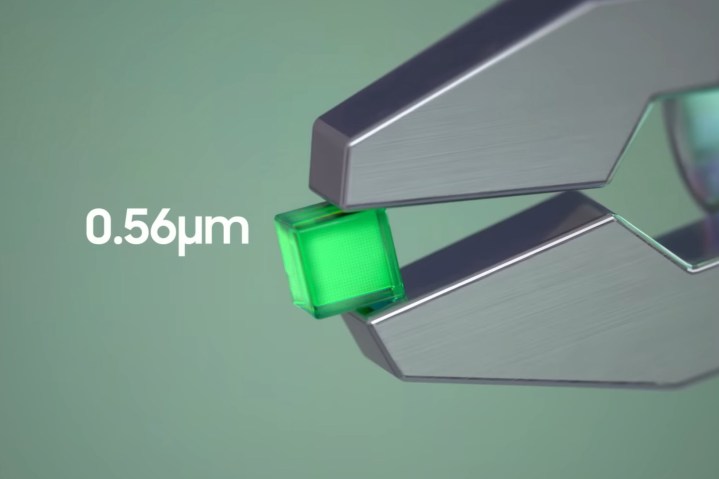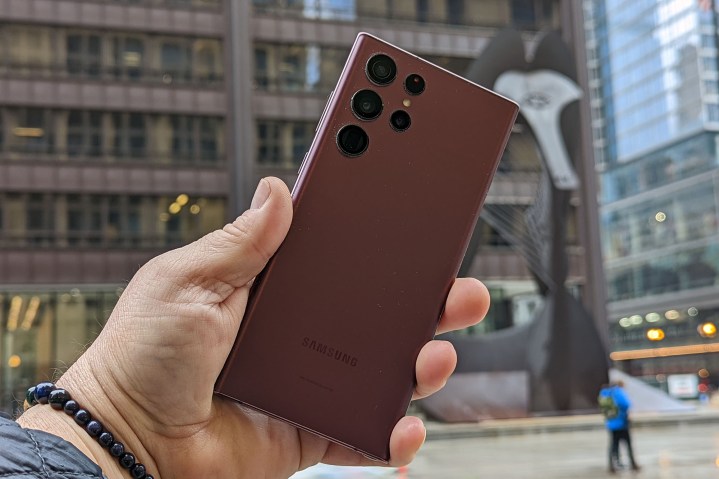Samsung has a new smartphone camera sensor in the pipeline, one that offers a resolution of 200 megapixels with some fresh tricks in tow. Officially called the ISOCELL HP3, this is not Samsung’s first 200MP camera sensor, but it has the smallest pixels that the company has fitted on a sensor to date. The company has already started sending out samples to vendors and aims to begin mass production later this year.
Interestingly, Samsung’s first-generation ISOCELL HP1 200-megapixel camera sensor is yet to appear on a commercially available phone, but it appears that the company wants to keep the momentum of innovation intact. The key improvement that arrives with the ISOCELL HP3 is that it features 0.56-micron pixels, allowing Samsung to produce a smaller 1/1.14-inch camera sensor format, while its predecessor offered 0.64-micron pixels that paved the way for a 1/1.22–inch sensor profile.

The key advantage here is that the smaller sensor surface area takes up less space, which means brands won’t have much trouble keeping their phones slim despite equipping them with a 200MP camera sensor. Samsung recently showcased the chops of its latest camera sensor by taking cat pictures and printing out a giant canvas that was bigger than the size of a basketball court. The goal was to showcase the terrific levels of detail that the camera can capture.
Lots of meaningful upgrades
Aside from smaller pixels, the ISOCELL HP3 also comes with a few software tweaks to enhance the results. Among them is a new Tetra2 (or Tetra Square) pixel-binning tech that merges 16 adjacent pixels to create a larger super pixel capable of absorbing more light data to produce brighter and more detailed photos — especially in challenging situations.
Compared to the usual pixel-binning process, the Tetra2 system performs it in two stages. First, it merges four 0.56-micron pixels using remosaic algorithms to create a larger super pixel of 1.12-micron size while the resulting image is 50MP. Next, a 2×2 array of four 1.12-micron super pixels are combined to create an even larger pixel of 2.24-micron size to produce 12.5MP photos. You can read more details about how pixel-binning tech actually produces a tangible difference in our explainer.
Samsung is also leveling up the auto-focusing game with the ISOCELL HP3 sensor. Going above the Dual Pixel Pro phase detection autofocus (PDAF) seen on its previous camera sensors, the latest offering from Samsung’s camera division adopts the new Super QPD tech that arms each pixel with auto-focusing capabilities and a relies on a system that puts a “single lens over four-adjacent pixels to detect the phase differences in both horizontal and vertical directions.”
The end results are more accurate colors and a faster focus lock experience. Samsung is also shifting to an upgraded Smart ISO Pro feature for HDR imaging. Instead of a dual-ISO approach that combines two images captured at high and low ISO settings to produce the final HDR shot, the new version relies on a triple-shot approach for taking a trio of images at three different ISO levels (low, mid, and high) to produce an even wider dynamic range.

Another key upgrade coming with the ISOCELL HP3 200MP camera sensor (one that photography enthusiasts will appreciate), is that it increases the 10-bit and 12-bit capture all the way up to 14-bit RAW capture. As for video recording, the new Samsung sensor is capable of native 8K recording without any cropping, while 4K videos can be shot at a frame rate of up to 120fps. Full-HD slo-mo videos at 480fps.
When can you expect to see it on a phone?
The new 200MP sensor from Samsung likely won’t appear in a Samsung Galaxy phone this year, as camera upgrades are usually reserved for Galaxy S flagships. The most obvious bet would be the Galaxy S23 Ultra, which will likely break cover in Q1 2023. However, there are a few brands that are already rumored to be working on phones with 200MP cameras.

Among them is an upcoming Motorola flagship that is slated for an official debut next month. The phone will reportedly come armed with Qualcomm’s Snapdragon 8+ Gen 1 SoC and might also offer 125W fast charging. Back in March, a leaked image supposedly showing the Xiaomi 12 Ultra popped up online, revealing a triple camera setup with a 200MP sensor sitting at the top.
However, both the phones are likely using the ISOCELL HP1 sensor and not the ISOCELL HP3. The latter will most likely appear in phones that will debut around the end of the year, or maybe early next year with the Galaxy S23 Ultra. Moreover, if the phone strategy of Chinese brands like Vivo and Oppo is anything to go by, we might get camera-centric Find X and X series flagships from Oppo and Vivo respectively next year, rocking Samsung’s new ISOCELL HP3 camera sensor.



